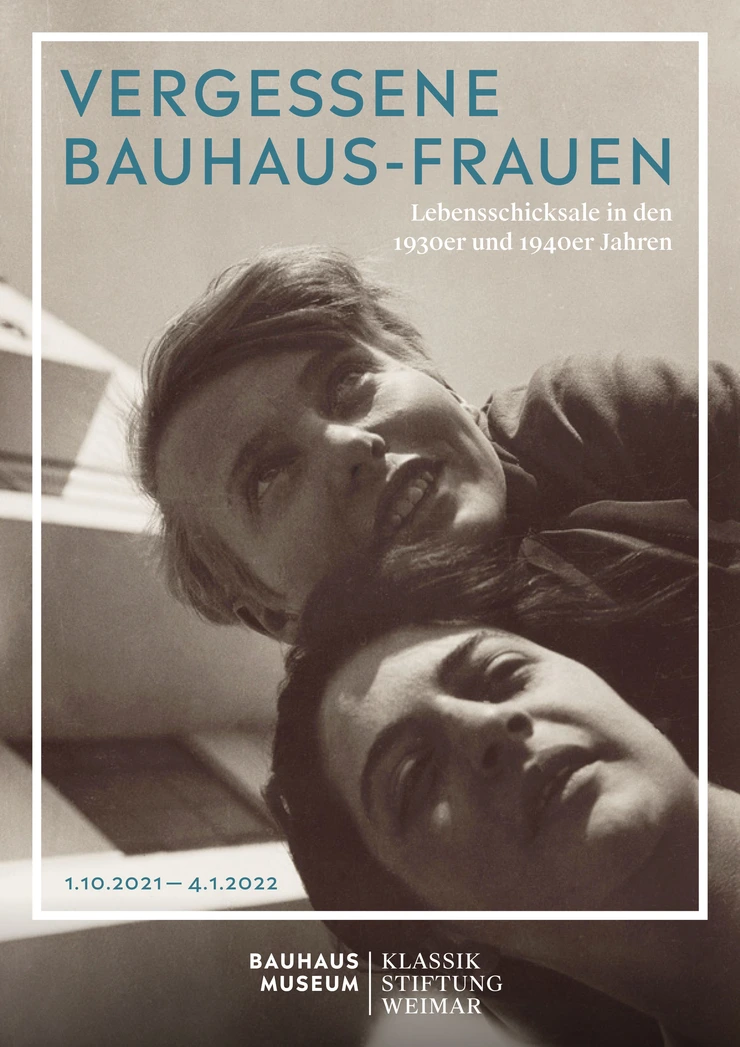The 2019 Bauhaus year drew renewed attention to the women of the Bauhaus. Yet there is still so much we do not know. There is no existing biographical data, for example, on almost one third of the 460 female students who enrolled at the Bauhaus. The exhibition “Forgotten Bauhaus Women. Life Stories of the 1930s and 1940s” at the Bauhaus Museum Weimar makes these artists and their works visible again. From 2 October 2021 to 4 January 2022, the joint project by the University of Erfurt and the Klassik Stiftung Weimar will present documents and artistic works that shed light on the often-fractured careers and lives of the Bauhaus women.
"Forgotten Bauhaus Women. Fates of life in the 1930s and 1940s"
There were many reasons why they were forgotten. For some, traditional gender roles, marriage or the difficulties of single life hampered their ability to freely develop their talents, preserve their works or leave an indelible mark in archives and museum holdings. The National Socialists’ rise to power in 1933 had an especially ominous impact on these female Bauhaus members. Some were persecuted by the Nazi regime and later murdered in the concentration camps. Others died in exile as victims of Stalinist purges, succumbed to disease, or perished in the nightly aerial bombings of World War II.
Biographical documents and artworks reveal the broad spectrum in which the Bauhaus women were creatively engaged. They participated in all the workshops of the Bauhaus and professionally contributed to the fields of architecture, photography, advertising, bookbinding and weaving. The presentation highlights a rich collection of works, including ceramics, paintings, graphic art, sculptures and textiles. In addition to a powerful wooden sculpture by Harriet von Rathlef-Keilmann, Anny Wottitz’s unconventional book covers – one of them made of cheetah skin – and the photographic experiments by Hilde Horn, the exhibition also presents drawings made by children in the Theresienstadt concentration camp. Deported in 1942, the Bauhaus artist Friedl Dicker gave drawing classes to children in the camp, and several thousand of their drawings were saved. Two of these, along with one of Dicker’s own works, are on display in the exhibition. Friedl Dicker was murdered in Auschwitz in 1944.
“The memory of the prematurely deceased Bauhaus women offers a more complex perspective on the history of the Bauhaus under National Socialism and exile, and thus ties into the discourse on gender studies and contemporary history,” explains Professor Patrick Rössler of the University of Erfurt. Not all women were persecuted; some readily embraced the new ideology and joined the Nazi party. According to Dr Anke Blümm (Universität Erfurt / Klassik Stiftung Weimar), “it is important to present these life stories in all their variations so as to avoid the false impression that women were destined to a typical fate in the 1930s.” Professor Wolfgang Holler, general museum director at the Klassik Stiftung Weimar, points out that “the theme of the exhibition is an outstanding example of the Klassik Stiftung’s commitment to highlighting the ambivalent relationship of modernism and National Socialism.”
The exhibition is accompanied by an extensive catalogue. On 8 October, the American Bauhaus expert Elizabeth Otto (Buffalo, State University of New York) will give a talk at the Bauhaus Museum Weimar entitled “New Perspectives on Bauhaus Research. Comments on Forgotten Bauhaus Women”.
Exhibition data
Forgotten Bauhaus Women. Life Stories of the 1930s and 1940s | 2 October 2021 – 4 January 2022 | Mon–Sun 9:30 am – 6 pm |Bauhaus Museum Weimar
Special exhibition area (3rd floor) Stéphane-Hessel-Platz 1 | 99423 Weimar
The exhibition is included in the admission fee to the Bauhaus Museum Weimar.
Catalogue
Anke Blümm and Patrick Rössler, (eds.)
Vergessene Bauhaus-Frauen. Lebensschicksale in den 1930er- und 1940er-Jahren, with essays by Anke Blümm, Patrick Rössler, Mor Presiado, Julius Redzinski, Elizabeth Otto et al.
Weimar 2021
108 pp., 106 ill.
ISBN 978-3-7443-0405-4


